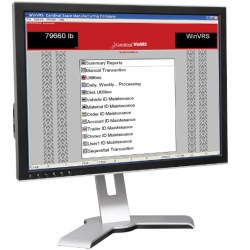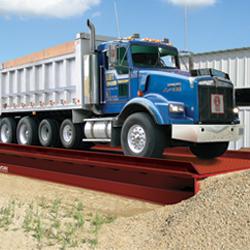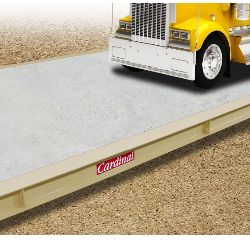Quite often readers will ask who are some of the top truck scale manufacturers in the United States? So in today’s entry we wanted to provide you a list of a few of the top truck scale designers and builders in the U.S. This is just a partial list of manufacturers. There are others but our experiences with many of the others are either limited or non-existent so we decided to just list the ones that we had experiences with.
Cardinal Scale offers vehicle weighing technology and applications and was the first company to produce an all-steel truck scale. Cardinal’s wide variety of USA-made truck scales includes options for every type of weighing need, including electronic and hydraulic truck scales with concrete, steel, and pit type decks. Wireless truck scales are a convenient way to wirelessly transmit data from the scale to the indicator to peripheral equipment like printers, PCs, remote displays, and networks.
Avery Weigh-Tronix truck scales weigh trucks and other vehicles dependably and accurately, even in tough industrial environments. These truck scales and motor-vehicle scales are manufactured to last with a rugged design, robust weight sensors and are all backed by industry-leading warranty options. The truck scales come in either steel or concrete to suit your application and they can be either surface or pit mounted, depending on the location and use of the scale. Each vehicle scale is fully factory assembled and performance tested to NIST, NTEP, and ISO specifications, prior to shipment. AWTX also has a lot of shipping supplies and weighing equipment as well.
B-TEK Scales, LLC was started in 1995 by the third generation of the Brechbuhler family, originally the objective was to have a manufacturing arm to supply Brechbuhler Scales and their offices. Since that time, B-TEK has grown and now boasts a distribution network of over 100 independently owned companies. The company’s corporate headquarters still remain in Canton, Ohio and the Brechbuhler family stays actively involved with the business.
Rice Lake Weighing Systems is an international leader in the manufacture and distribution of weight-related products and process-control equipment. The company roots are planted firmly in the principles of quality and customer service. Through three generations of family ownership these ideals remain unchanged. Today, Rice Lake Weighing Systems is world renowned for delivering the highest standard of product and the best service in the weighing industry.
Rice Lake Weighing Systems’ SURVIVOR® truck scales are known as the Toughest Scales on Earth®. Designed to provide reliable performance under the most demanding conditions, SURVIVOR truck scales are built with more structural steel, a superior support structure and innovative design features that provide consistent accuracy, less downtime and longer scale life. Each SURVIVOR is built with our exclusive five-step finishing process, and guaranteed with a five-year lightning protection warranty.
Since 1918, Thurman Scales has been providing top quality weighing equipment for industries including Agricultural, Mining, Timber, and Steel. Thurman Scale specializes in off-road type vehicle scales. Thurman Scales are built to the highest standards in the industry as a direct result of years of truck-weighing experience in demanding workplace environments. The Double-Ended Shear beam design helps set Thurman industrial scales apart from the competition. Its design is self-restoring, providing users with one of the most reliable, durable, and forgiving scales in the industry.



